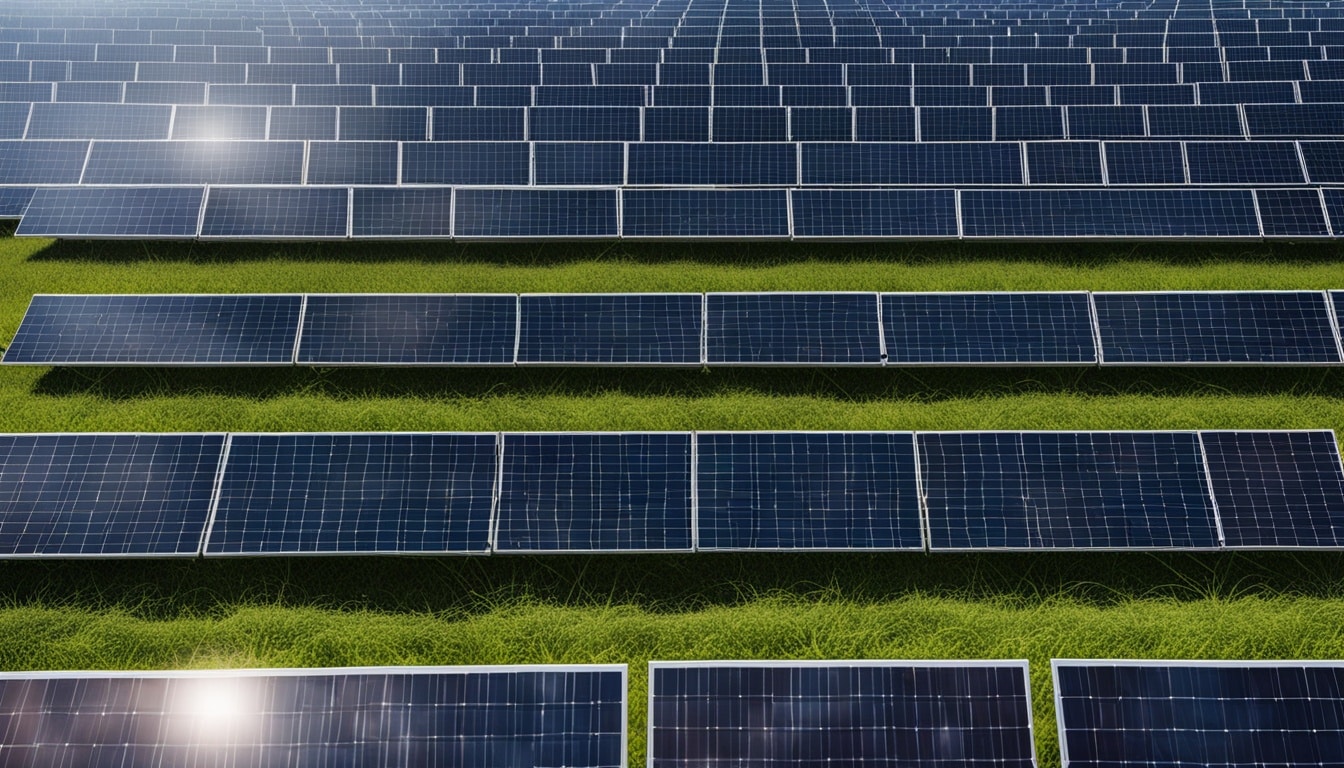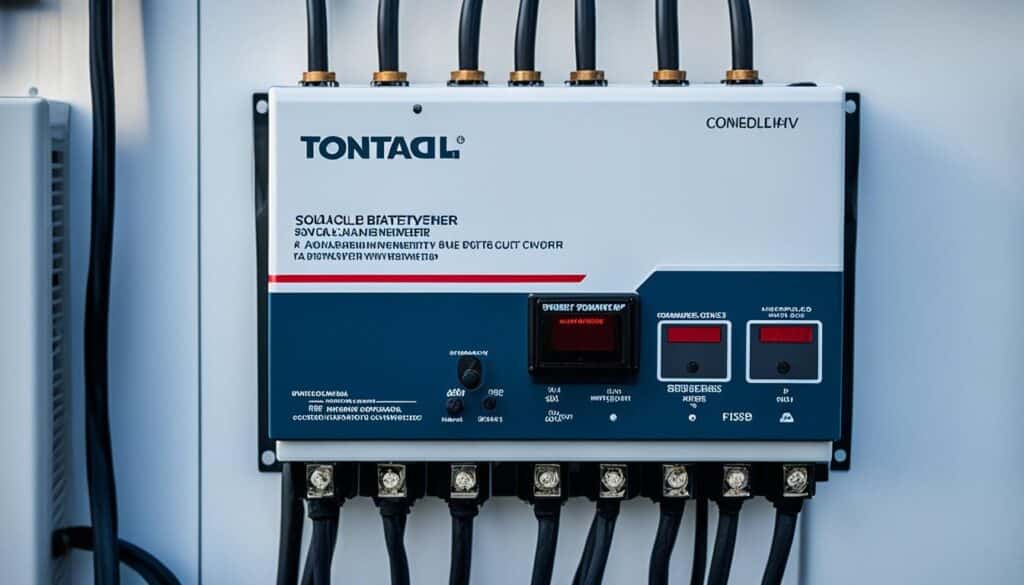
Hello, I’m [Your Name], and I want to guide you in making the best solar system. Whether it’s for your home, business, or any other place, getting the right solar design matters a lot. It helps in using energy well, saving money, and being kind to the environment. I’ll give you tips and insights to get a solar system that’s just right for you.
RatedPower is a great place when you want the best solar system design. They have a cool tool that figures out the perfect spots for all the important parts of the solar system. This includes where to put the structures, roads, power stations, and cables for the most efficiency. Their system is faster now and lets you work on different designs at once. This way, you can make your solar system work perfectly.
Key Takeaways:
- Optimizing your PV system design allows you to maximize energy production and efficiency.
- RatedPower is a platform that offers optimization solutions for solar PV designs.
- Their algorithm automatically positions structures, roads, power stations, and cables for an efficient layout.
- Improvements in simulation time and structure grouping make the design process quicker and simpler.
- You can fine-tune layout parameters to optimize your PV plant and tailor it to your specific needs.
Structure Grouping Algorithm for Optimal PV System Design
Designing a photovoltaic system needs a perfect plan. The structure grouping algorithm is key to this success. At RatedPower, we’ve made a better algorithm for this job. It makes blocks with regular shapes and places them closer to the roads. This adds a lot to how the designs turn out.
A more centered structure layout means less need for low voltage cables. This makes the design easier and more efficient. The system not only looks better but also costs less to run.
Our new algorithm makes simulating designs much faster than before. It used to take 66 seconds, but now it’s only 0.6 seconds. This is a huge leap forward.
“The reduced simulation time allows designers and engineers to iterate and optimize their designs more rapidly, leading to quicker project turnaround times and better decision-making.”
This speed in simulations lets users try out different designs quickly. They can see the effects of changes fast. This makes planning solar systems much more flexible. It speeds up the entire process.
The system by RatedPower makes photovoltaic designs much better. It makes sure designs have blocks with regular shapes. It also lowers the need for low voltage cables. And the simulations are way faster, letting you tweak your design in no time.
Choose RatedPower for the best photovoltaic system design. Our tools and algorithms are top of the line. They help create the ideal solar system for any project.

Layout Parameters and Optimization for PV System Design
Designing a PV system needs thought on many layout factors to work better. RatedPower lets users choose from many options. They can pick what suits their project needs best. Here are some key factors to consider:
Type of Layout
The layout type you pick affects how well your PV system works. RatedPower has two main layout types:
- Regular Blocks: PV modules set in a standard block layout. This creates a neat, simple look.
- Adaptive Design: The system adjusts to fit the available space. It can use irregular shapes to use land fully. This is great for projects with unique spaces.
Choosing the right layout helps use land better and boost your PV system’s performance.
DC/AC Ratio
The DC/AC ratio links the DC power from PV modules to the inverter’s AC power. It considers the module, inverter, and structural details.
Picking the right ratio is key. It impacts energy output and efficiency. A high ratio raises DC power. A lower one might handle power changes from less sunlight better.
Setbacks
Setbacks are the spaces between PV system elements like modules, structures, and roads. They’re key for safety, maintenance, and top performance.
RatedPower lets users set setbacks to fit their project. Thinking about setbacks ensures smooth operation, less shadowing, and a longer PV system life.
Positioning of Power Stations and Roads
Where you place power stations and roads in the PV system matters a lot. RatedPower helps users pick the best spots to enhance access and upkeep.
Smart placement of power stations and roads makes operations smoother and maintenance easier. It also helps energy flow efficiently through the system.
With RatedPower’s help, users can tweak their PV system design to produce more energy and increase overall efficiency.
| Layout Parameter | Description |
|---|---|
| Type of Layout | Choice between regular blocks or adaptive design layouts |
| DC/AC Ratio | Defines the relationship between DC power generated by PV modules and AC power output of the inverter |
| Setbacks | Customizable distances maintained between different elements of the PV system |
| Positioning of Power Stations and Roads | Selecting the optimal placement of power stations and roads within the layout |
Final Tweaks for the Perfect PV System Design
Getting the best solar system design means looking at the small things. You need to think about inverter sizes, battery needs, the right solar charge controller, and the size of the panels.
Inverter Sizing
Finding the right inverter size is key. It changes the power from solar panels into electricity for your home. When picking an inverter, make sure it can handle 25-30% more power than you currently use.
Battery Sizing
It’s crucial to get the right size battery. These are vital for storing electricity for when the sun isn’t shining. Think about how much energy you use, how many days you want the system to work without sunlight, and what percentage of a charge the battery can safely give. This will make sure you have enough power stored and make your system reliable.
Solar Charge Controller Selection
The solar charge controller balances how your batteries get charged to avoid damage. Choosing the correct one protects your batteries and boosts your solar system’s performance. You should look at the PV array’s short circuit current to pick a controller that’s safe and works well with your system.
PV Module Sizing
Getting the right size solar panels is crucial. This is to meet your energy needs and get the most from your system. To find the right size, think about how much energy you need each day and local conditions like sun exposure and how the panels will be set up. The right size panels ensure you get all the power you need.
These final checks will help make your PV system work perfectly for many years. You’ll have steady, green energy for your needs.

| Aspect | Considerations |
|---|---|
| Inverter Sizing | Total wattage of appliances, 25-30% larger for safety |
| Battery Sizing | Total energy consumption, autonomy days, depth of discharge |
| Solar Charge Controller Selection | Total short circuit current of PV array |
| PV Module Sizing | Total watt-hours per day needed, panel generation factor |
Conclusion
Designing a solar PV system is key for using renewable energy efficiently. When you know about PV modules and other key parts, you can make a solar system that fits your needs. This ensures you get the most from solar energy.
RatedPower makes it easier to design your solar system. Their tools help optimize your design, making sure it produces as much energy as possible. Whether for your home or a big project, these tools simplify your planning. They help you take full advantage of solar energy.
Using solar PV systems has many upsides. They offer clean electricity and help fight climate change by lowering harmful emissions. Solar energy is renewable and sustainable, leading to a cleaner future.
If you care about the environment or want to cut your energy bills, a solar PV system is a wise choice. It’s a dependable and green option compared to traditional energy. By using the sun, you’re supporting a sustainable and efficient future for all.






